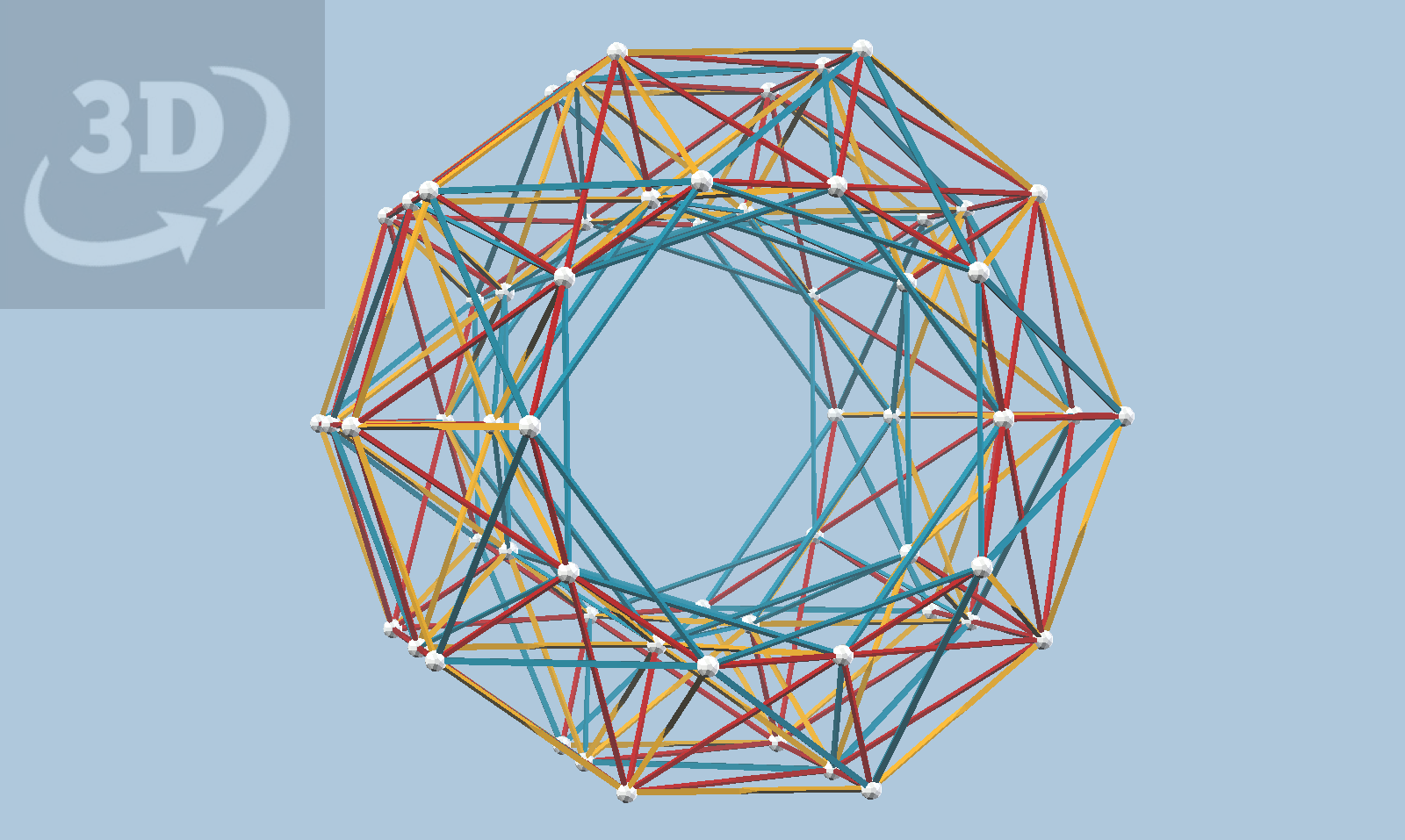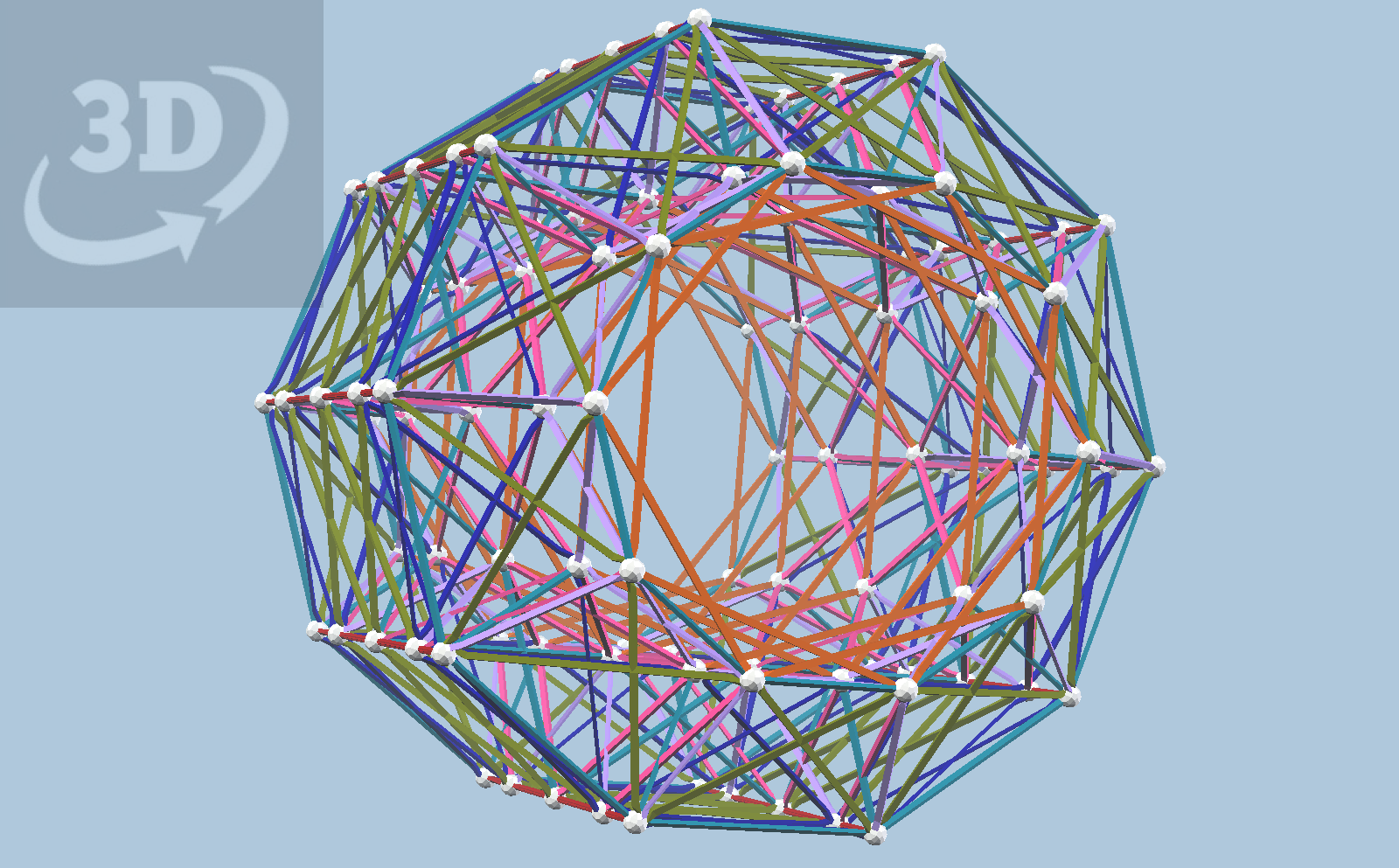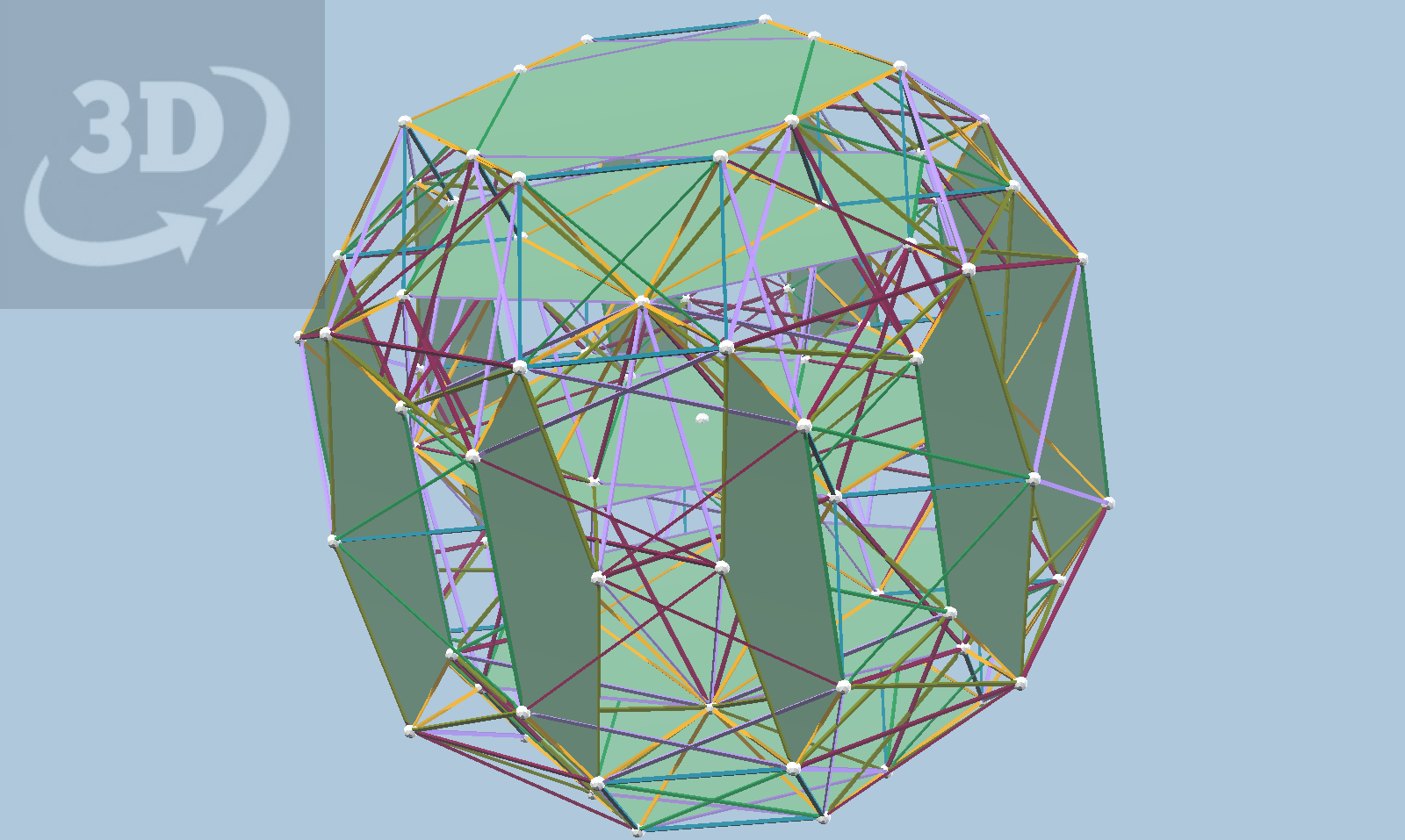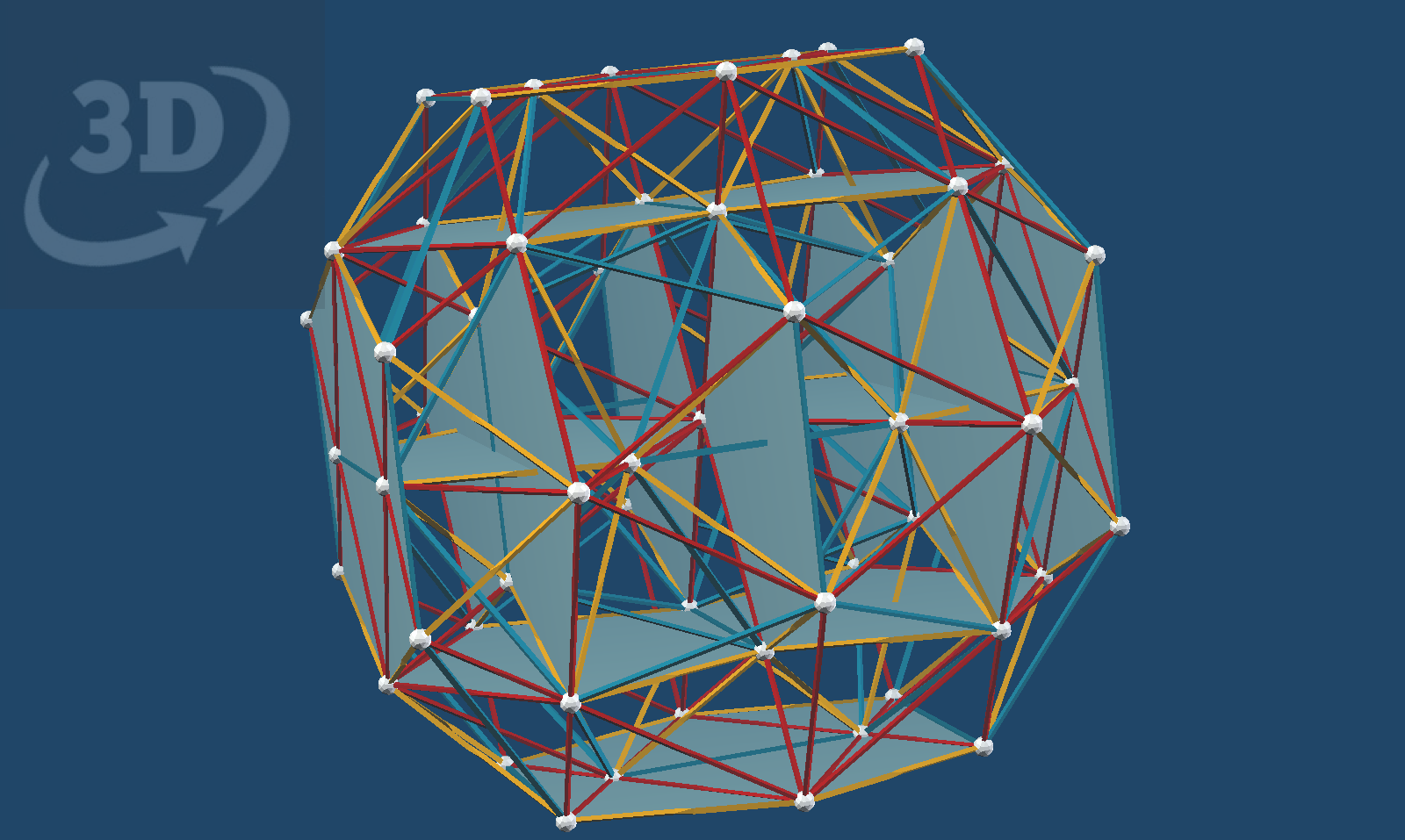Today I learned of the grand antiprism, a unique four-dimensional polytope discovered by Conway and Guy. Wikipedia gives more information about it. Since its vertices are 100 of the 120 vertices of the 600-cell, it certainly seemed to be possible to model the grand antiprism in Zome and vZome. As you can see from the images on this page, this turns out to be true.

David Richter gave me the hint I needed to construct the object in Zome. He explained that one way to "symmetrically" remove 20 of the 120 vertices of the 600-cell was to find the projections of two orthogonal decagons, and remove the balls and struts comprising those decagons and all attached struts. The usual Zome model of the 600-cell exhibits some obvious blue decagons as "equators", and each equator has an orthogonal red "polar axis" that turns out to be the other decagon, projected down to a line segment. Using "H_4 1", shift-select, and "select neighbors" in vZome, it was trivial to produce this model.
Building the object with Zome is fun and instructive, but you must keep in mind that this is only one of the infinitely many possible projections of the grand antiprism to three-dimensional space. Let's call it the "Zome projection". It could readily be described as the "most symmetric" projection of this object, since each of the interior cells (like the central blue pentagonal antiprism) actually represents the projections of two distinct cells in the four-dimensional polytope, overlaid to coincidence in three dimensions. This projection also clearly exhibits the three-dimensional symmetry group of the pentagonal antiprism.
The Zome projection shows one of the cycles of pentagonal antiprism cells in its columnar interior (with the coincidence hiding the fact that there are 10 antiprisms). But where is the "orthogonal" cycle of antiprisms mentioned by Bowers? Flattened around the "equator" of the model, so all you see is the triangular sides of the antiprisms; the pentagons are projected down to red lines, two struts and three balls.
There is another projection that is shows one cycle of antiprisms as a central column, but does not exhibit the coincidence of the Zome projection. This projection, accomplished in vZome by using a red strut as a symmetry axis before creating the initial 600-cell, is shown below. You would call this the "face first" projection of the grand antiprism, since two pentagonal faces lie in the very center of the model; the Zome projection is a "cell first" projection.

In this projection, you can see all ten of the central column of pentagonal antiprisms. As in the Zome projection, the equatorial ring of pentagons is projected down to red lines, but with a different orientation, so that none of the five vertices of the pentagons are coincident. Note, of course, that most of the struts in this model are not real Zome struts... only the red struts and the perpendicular blue struts are. Because the coincidence (2-to-1 overlaying) is gone, this projection displays roughly twice the number of struts as the Zome projection, and has the symmetry of a decagonal prism rather than a pentagonal antiprism.
(I should note that all of the projections shown on this page were manually derived from the related 600-cell projection, always by identifying two orthogonal decagons and removing them and any incident struts. In the two projections we have seen thus far, identifying those orthogonal decagons was trivial; in the subsequent projections, there was more guessing involved, but the results seem to be pretty obviously correct. The cycles of pentagons are almost completely disjoint, as they are in the four-dimensional object, though occasionally the projection collapses a separating edge down to a point. Nonetheless, you should bear in mind that my "reverse-engineered projections" have not been rigorously proven to be faithful projections of the grand antiprism.)
Is there a projection that shows more clearly both of the orthogonal chains of pentagonal antiprisms at once? Yes, there are many. Two are easy to achieve with vZome. The first is a "green strut" projection, and uses only an octahedral subset of the blue, yellow, and green zones from real Zome.

In this projection, I have added panels to show the pentagonal faces of both antiprism cycles, which would be very hard to pick out otherwise. This projection has no axis of prismatic or antiprismatic symmetry, so does not lend itself to animation. However, it is very instructive to view it in vZome in a parallel ("perspective" off) projection, particularly with direction "snap" on. Snapping to a particular red axis gives you the view below:
Even if you select a particular projection direction (like the green or red strut), there are still a variety of different projections of the grand antiprism available in each case, depending on the orientation of the projection hyperplane with respect to the symmetry axes of the grand antiprism itself. For example, even the Zome projection admits at least one other projection of the grand antiprism, shown below, with neither cycle of pentagons collapsed to line segments. This projection has no antiprism symmetry, nor even pyritohedral symmetry. Here's a simple line drawn parallel projection of it that has the symmetry of a square. Can anyone generate some other projection that has interesting properties?
